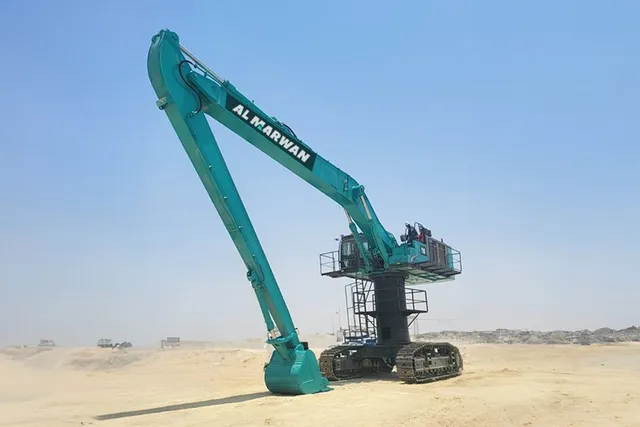The Economics of Rent Excavator: A Cost-Effective Choice for Construction
Excavators are indispensable in the construction and earthmoving industries, enabling efficient digging, lifting, and site preparation. However, the cost of purchasing these machines can be prohibitively high, particularly for small to mid-sized contractors. This is where the option to rent excavator becomes an economically viable alternative. Renting allows businesses to access high-performance equipment without the financial burden of ownership, providing flexibility and cost savings that improve project efficiency. In this article, we’ll explore the economic benefits of renting an excavator, key cost considerations, and how businesses can maximize returns by opting for rental solutions.
The Cost Dynamics of Renting vs. Buying
One of the primary economic advantages of choosing to rent excavator over purchasing is the substantial reduction in upfront costs. Buying an excavator involves a significant capital expenditure, often ranging from tens of thousands to hundreds of thousands of dollars, depending on the model and specifications. In contrast, renting provides access to the same machinery at a fraction of the price, enabling contractors to allocate their capital to other business needs such as labor, materials, and operational expenses.
Additionally, depreciation is a major financial factor in equipment ownership. A newly purchased excavator begins to lose value the moment it is used, with resale prices diminishing over time. Renting eliminates concerns about depreciation, allowing businesses to use up-to-date machinery without worrying about declining asset value. This is particularly beneficial for short-term projects, where equipment may not be needed after a specific period.
Operational Cost Considerations
Beyond the initial cost of acquisition, excavator ownership comes with ongoing expenses, including maintenance, storage, insurance, and transportation. Regular servicing, part replacements, and unexpected repairs can add up significantly over time. When opting to rent excavator, maintenance and repairs are typically handled by the rental provider, eliminating unpredictable costs and reducing downtime. This ensures that contractors can focus on completing projects efficiently without disruptions caused by mechanical issues.
Storage and transportation also contribute to ownership expenses. Storing an excavator requires space, which might necessitate additional real estate costs, particularly in urban areas. Transporting a large machine between job sites can be costly and logistically complex. Rental companies often offer delivery and pickup services, eliminating the hassle of transportation logistics and further improving cost efficiency.
Financial Flexibility and Cash Flow Management
For many construction firms, financial flexibility is crucial to maintaining a steady cash flow. Purchasing heavy equipment outright ties up capital that could be used for payroll, project investments, or business expansion. Renting allows companies to manage their cash flow more effectively, paying for equipment only when needed rather than committing to a long-term financial burden.
Additionally, rental expenses can often be deducted as operational costs, providing tax advantages for businesses. This differs from equipment ownership, where depreciation schedules may not offer immediate financial relief. By choosing to rent excavator, businesses can optimize their financial planning while keeping liquidity intact for unforeseen expenses or new opportunities.
Project-Specific Equipment Needs
Different projects require different types of excavators, and renting offers the flexibility to choose the right machine for each job. Instead of purchasing a single excavator and attempting to use it for a variety of tasks, contractors can rent specialized models such as mini excavators for confined spaces or long-reach excavators for deep digging applications. This ensures that the most efficient equipment is used for each project, leading to improved productivity and cost-effectiveness.
Seasonal demand fluctuations further highlight the benefits of renting. Some construction companies experience varying workloads throughout the year, making it impractical to own an excavator that sits idle during off-peak seasons. Renting allows businesses to scale their equipment needs up or down as required, ensuring that costs align with revenue-generating activities.
How to Maximize Savings When Renting an Excavator
While renting is generally more cost-effective than buying for many contractors, there are still ways to maximize savings and improve economic efficiency:
Compare Rental Rates – Different rental providers offer varying pricing structures, so researching multiple suppliers can help secure the best deal.
Opt for Long-Term Rentals When Needed – If an excavator is required for an extended period, negotiating long-term rental rates can result in significant discounts.
Plan Ahead – Booking equipment in advance can help avoid last-minute availability issues and premium pricing.
Use Equipment Efficiently – Proper operator training and efficient scheduling can minimize idle time, ensuring that rental costs translate directly into productivity.
Understand Rental Terms – Reviewing contract terms, including maintenance coverage, insurance requirements, and usage limits, helps avoid unexpected fees.
The decision to rent excavator instead of purchasing one outright is a financially sound strategy for many businesses. By reducing upfront costs, eliminating depreciation concerns, and offering flexibility in equipment selection, renting ensures that contractors can complete projects efficiently without overextending their budgets. With the added benefits of maintenance-free operations, improved cash flow management, and tax advantages, renting excavators continues to be a cost-effective solution in the construction industry. As market demands evolve, renting remains a practical and economically viable choice for companies looking to stay competitive while managing resources effectively.



